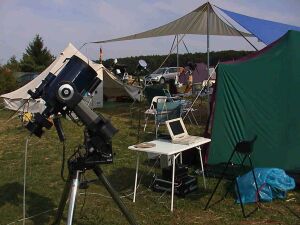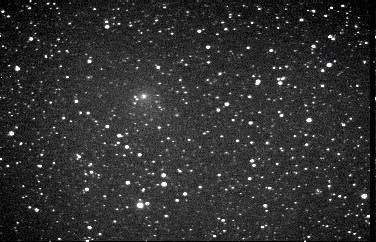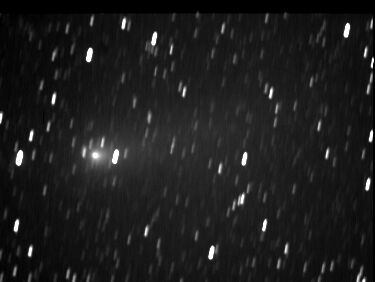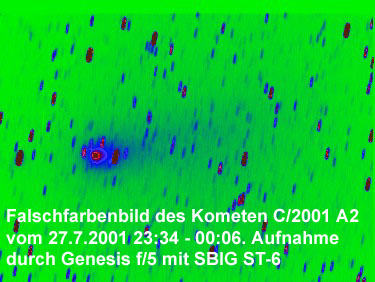Observing comets with a CCD camera
Observing comets is one of the main goals using a CCD
camera. There are lots of advantages:
- No chemistry in the darkroom
- The results are to be seen immediately
- Astrometry can be done
- Dimmer comets get into the range of your equipment
- Fast moving comets can be followed by exposing series of
pictures
- CCD can be practiced even under light polluted urban skies
Of course there are some disadvantages:
- You need a pc or a laptop computer near your telescope
- Lots of energy are needed, a problem in the field
- You have to carry a lot of equipment
- Great and bright comets can be done better unsing conventional
methods
Most of us do not own an privat observatory. We have to escape the city
lights carrying all of our equipment with us. A lot of power is needed to work
with the equipment. Normally I carry two car batteries with me. One is used for
the CCD camera and the other for the telescope. All equipment running consumes
10 Ampere! The CCD camera needs 4 Ampere because of the cooler...

After setting up the telescope I have to focus the camera to obtain sharp
images. It is a good idea to use the time needed to cool down the camera. To
identify the comets a good star chart is needed. I use Guide on my notebook for
this. It is a hard job to locate a position a dim comet on the small CCD chip.
Sometimes the limmiting magnitude of Guide is not enough for identifiing the
stars captures on the chip. So additional catalogues like the USNO A2.0 are
neccessary. CCD cameras are most sensitive to red light and so you have to take
into account the color of the stars.
 |
A CCD picture and the same portion of the sky seen by Guide |
 |
Be sure to use the most recent orbital elements of the comets. They can
be found for the most popular programs
here.
Sometimes faint comets appear stellar. In this case a series of pictures
is taken to identify the comet by its motion using the blink function. A very
slow moving comet can be identified taking a series of pictures stacked (added)
into one picture. So the signal/noise ratio can be improved.
Once a comet
is found you have to obtain darkframes and flatfields. This is absolutely
neccassary for creating „pretty pictures" and for processing astrometry.
Comet pictures are like pictues of galaxies. The information is hidden in the
dark parts of the picture. Perfoming log scaling helps to reveal the
information hidden in the picture. To enhance the visibility of the tail a
reverse view or the use of false color palettes is useful. This helps the human
eye to identify this weak information.
 |
Using false colors helps to reveal the weak information |
 |
Home




